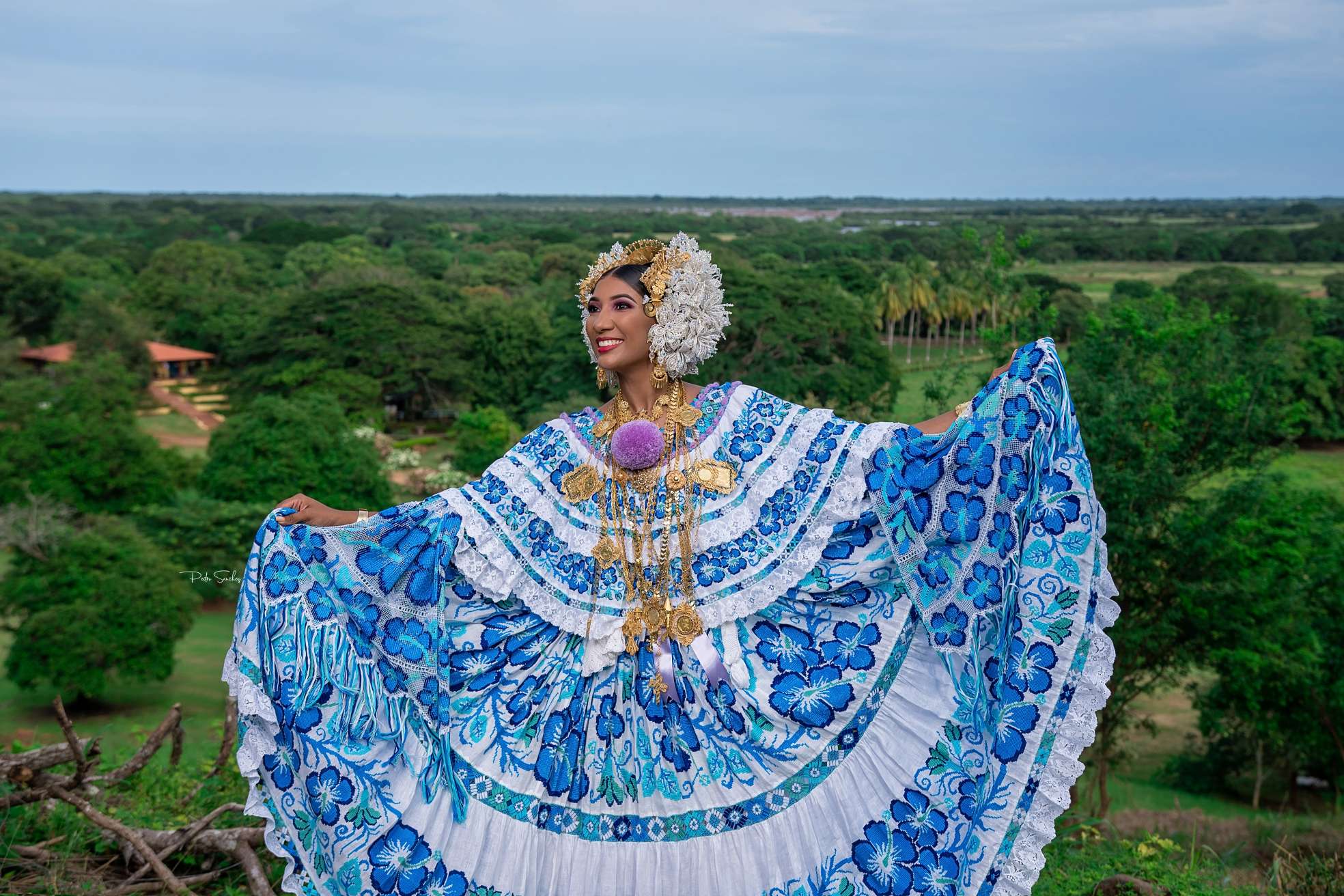Santo Domingo is a town located on the Pacific slope, a few kilometers from Mensabe port, and three minutes from Las Tablas town, on the highway to Pedasi. It belongs to the district of Las Tablas, province of Los Santos. It is a county (corregimiento) since 1909, when it still had the name of La Teta, a name related to the shape of a hill that has the identical shape of a woman’s breast.

Cradle of Renowned Singers and Musicians
In 1915 the locals decided to change the name of La Teta to Santo Domingo. This picturesque town is well known and respected for cultivating folklore. Great personalities were born in this land, such as Lucy Jaen, the greatest singer that Panama has ever had; Italo Herrera, internationally renowned violinist, who has won many awards; Jose de los Santos Barrios, violinist and composer; Arquimedes (Melly) Herrera, a great composer.
It is the only place in the world where the Perote festival is celebrated. It consists of a walk to the beach, singing and dancing in tuna and getting muddy. This festival is celebrated during the months of August, September and October of each year, and the songs that are used are typical of that activity.

Epicenter of Women and Men Artisans of the Skirt
Santo Domingo is famous for being the epicenter of artisan women and men who make skirts,”tembleques” and everything related to our folklore. Tuesday Carnival in Santo Domingo is internationally famous for the tuna parades of Calle Arriba and Calle Abajo, with colorful skirts, where even women from neighboring towns participate for the great tradition that takes place there.
For all of the above, Santo Domingo is the cradle of the Panamanian Pollera (traditional Panamanian dress). The clothing and goldsmithing that is carried out is famous throughout Panama and even abroad. Traditions of this region that pass from one generation to another and that two of its greatest representatives tell their story and work.

History, Process and Tradition in the Making of la Pollera
The tradition in making of the pollera for Profesor Norman Samuel Sanchez Combe comes from his family. This is because the great-great-grandmother Leonor Gonzalez de Combe, who lived 96 years old, weaved and assembled la pollera, and also mastered most of the techniques for making this dress, for many, the most beautiful in the world. Since Leonor, the tradition has passed from one generation to another, Norman’s mother being the one who taught him this art, who helped her transfer drawings from paper to cloth when being a kid. Already in the fourth year of high school he learned the art of designing the pollera and established himself as a cartoonist helping his mother in the making of the skirt.
Norman Samuel comments that many studies say that the making of this dress began in Panama City, however, the crafts people from Las Tablas and Santo Domingo were influenced by the Spanish. They have also been very meticulous in the structure which is very important to keep this costume as traditional as possible within the inevitable process of evolution.

The initial process of the pollera is the design, the step that every woman who seeks to have a skirt looks with expectation to see if she makes the investment. For Norman that part is essential since as a designer he is inspired by the muse and her dreams to make it. After the design comes the choice of tones, the cut of the textile and with the artisans who work with them you can see the details, as well as the fineness of the piece and the sharpness of the design so that it goes according to the technique to be used. This cluster of activities also includes the artisans who make the petite, braids, tremble, all the artistic manifestations that involve what is required for a woman to go out to dance wearing a pollera. Norman thinks that the reason why it is considered the most beautiful traditional dress in the world is due to the work done by many talented people in these arts to make each dress…a work of art.

Family Legacy in Goldsmithing
Santo Domingo is an important place in this field, however La Palma de Las Tablas is the center of the most important goldsmithing and where more goldsmiths have lived.
Mr. Ennio Ortiz is a renowned goldsmith, however he learned this art by pure chance, he was lucky enough to meet the Villareal family from La Palma de Las Tablas, where they have been making jewelry for the pollera for more than three generations.

In Mr.Ennio’s workshop, the pieces of jewelry for the pollera are made from cero until the product is finished. The metal is melted, it is passed through a rolling mill or wire, the pieces are taken out to be welded, until the finish, which is cleaning and gold plating. Likewise, the cuts are made by themselves and by the way they make their own tools since the Pollera garments are only used in Panama, therefore the runners for the flat chain, the witch chain, solitary or the glitters, are pieces that wear the elaboration of each chain that is made in the workshop.
In Mr. Ennio’s workshop, the making of crowns is also very important since Las Tablas Carnival, the most important in the country is widely used by the different queens. They have also made crowns for festivals such as the Pese Cane and Sugar Festival, the Nata Festival, the Guapo Bull Festival, the Orange Festival, as well as carnival queens from different places throughout the country.







